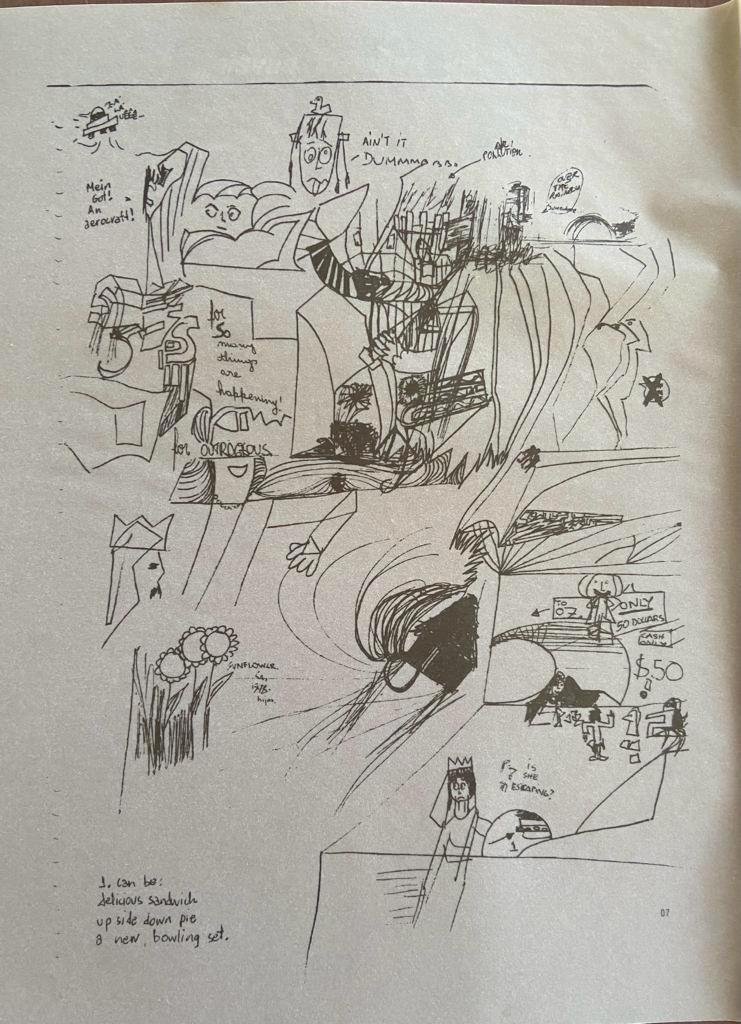
RENATO RUSSO MANFREDINI JR.
(text for catalog)
The Continuous Writing of the Verse
A collection that revitalizes memory. An exhibition that unveils the musical practice through the use of writing: manuscripts are everywhere, and it is through this vein that words transform into sounds and verses, through familiar letters and those that are new to the public.
How to approach the myth, bring it to the earthly plane, and involve it in the web of possibilities that escape banality? This exhibition presents objects that are records of awards, newspaper articles, musical instruments: things that calm the minds seeking traces of presence within the memory of media-related objects. After all, we are dealing with the persona of Renato Russo. However, it was not the craving for objectification that motivated this project. The exhibition does not follow a linear thread that orderly arranges data from one end to the other. It is understood that the creative process —moment of the inception and development of ideas—is everywhere; it cannot be confined within the limits of the medium, tied to one or another attempt, hostage to a single interpretive parameter.
These places, in Renato's universe, have long been found in books about sexuality, spirituality, musical genres, philosophy, astrology; in records, showing preferences for punk, rock, opera, Italian folk songs; and in films, spanning aesthetics from the horror genre—produced by Hammer Films— to Almodóvar. Jean-Jacques Rousseau (1712–1778), the Swiss writer who joins the chorus of voices alongside the French painter Henri Rousseau (1844–1910), and British mathematician, philosopher, and sociologist Bertrand Russell (1872–1970), serve as catalysts for the creation of the heteronym Renato Russo & Eric Russell—a character who drives his desire for musical expression and is part of the imaginary band titled 42nd Street Band—emerging at the peak of a restless adolescent boy’s life, a voracious reader and listener of books and records, and still, Renato Manfredini Júnior.
The freedom to experiment was exercised from then on, in the 1970s, specifically in 1975; a blend of ideas without commitment to finish or conclusion. At this point, we detect the beginning of a written output that borders on obsession, where series of musical tracks, genealogies of the band members, tour schedules, and interviews are gathered. But the writing seeks more space and goes in search of other stories, whether fiction or parts of real events: phrases and sonnets scatter across the pages of school notebooks, their covers, diaries, loose sheets, in the form of notes, letters, and cards.
One must accept the disjointedness as an integral part of this material, which is sometimes accompanied by a clue: a date, an "under libra," a production reminder for a show; it can even be
cryptic. As with the numerous versions of the same song. Examples include "Metal contra as nuvens" from 1991, or "Há tempos", from 1989. The manuscripts were the embryo from which a vast musical repertoire emerged, registering not only the influences already mentioned but also the exchange of ideas with friends, from the partners of Aborto Elétrico—Fê Lemos and Flávio Lemos —to those from Legião Urbana during its existence—Dado Villa-Lobos, Marcelo Bonfá, Paraná, Paulo Paulista, and Renato Rocha—and so many others—contemporaries of his time in Brasília and Rio de Janeiro, musicians from other bands, other musical genres, as well as dancers, actors, filmmakers, and producers who actively participated in cultural movements.
In a world where a piece of cotton must become silk, where perfumes take the place of essentials, the manuscripts and drawings, part of galleries of characters or casual scribbles on the pages of mundane and everyday mediums like notebooks, are the raw material of what has become public— versions of a world in expansion. They hold stories that speak of teenage anxieties, existential conflicts, outcries about the lack of ethics in social relationships, or messages that reveal an incessant search for love, like when he writes: "My heart awaits greater riches. My heart is tense, irritated. Elusive and tired. It is rough, crude, poor. Miserable."
The fluctuations of life and its diversities were exposed as they are: part of an extensive and oscillating spectrum, sometimes full of questions, sometimes full of affirmations, and the songs embodied these feelings: those that seemed to deliver teachings, interpreted as a manifesto for urgent causes involving gender issues, social class conflicts, economic chaos, and disarmament, and those with a strong sentimental charge, more lyrical, and even spiritual. The thread that connected the points, the scribbles, the symbols, and the words in the notebooks and papers generated a long process of recording ideas that were not finalized with a knot that seals the end of the story with the closure of life.
Among Renato's manuscripts, there are unpublished projects—mostly sketches for theater plays and films. Like the theater play, completed and dated 1982, A Verdadeira Organização do Desespero, conceived in the format of a Greek tragedy, inspired by Aeschylus; or the unfinished A Visita de Mr. Green: Pantomima Cega em Dez Pedaços para Cinco Atrizes. There is also the screenplay for the film The Film, set in Brasília, which includes, among the characters, Dado, Bonfá, and Renato Rocha, and the idea of filming the novel O Bom Crioulo by Adolfo Caminha (1867–1897), a naturalist writer, published in 1895—his last and most recent project.
Forever, writing functions as a core, a hub of expression and a theme for revelation. As it is inscribed on one of the pieces of paper from his precious collection: "To be a writer becomes me."